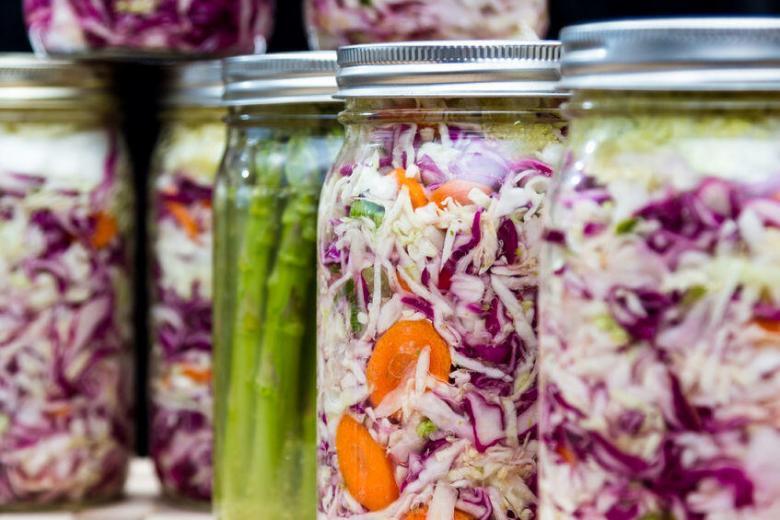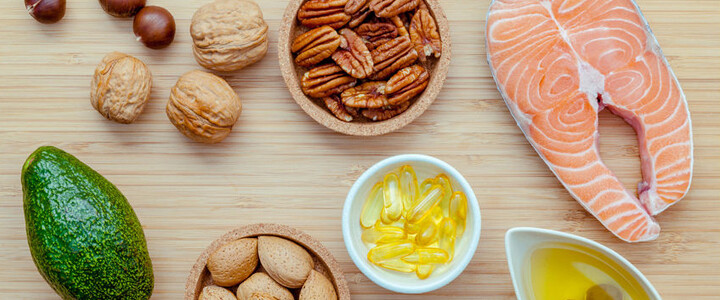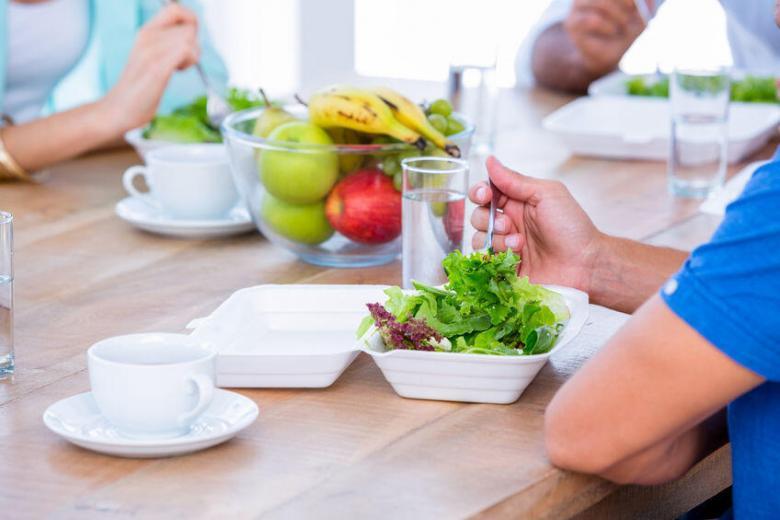6 Fermentation Myths Busted
 [et_pb_section bb_built=”1″ admin_label=”section” transparent_background=”off” allow_player_pause=”off” inner_shadow=”off” parallax=”off” parallax_method=”on” make_fullwidth=”off” use_custom_width=”off” width_unit=”off” make_equal=”off” use_custom_gutter=”off” fullwidth=”off” specialty=”off” disabled=”off” custom_padding=”0px||0px|”][et_pb_row admin_label=”row” make_fullwidth=”off” use_custom_width=”off” width_unit=”off” custom_width_px=”1080px” custom_width_percent=”80{2576162dc87fac637fb05d96ed224a3a1f9916e34036ef411848967d76917bf7}” use_custom_gutter=”off” gutter_width=”3″ allow_player_pause=”off” parallax=”off” parallax_method=”on” make_equal=”off” parallax_1=”off” parallax_method_1=”on” parallax_2=”off” parallax_method_2=”on” parallax_3=”off” parallax_method_3=”on” parallax_4=”off” parallax_method_4=”on” disabled=”off” background_position=”top_left” background_repeat=”repeat” background_size=”initial”][et_pb_column type=”4_4″][et_pb_text background_layout=”light” text_orientation=”left” use_border_color=”off” border_style=”solid” disabled=”off” module_alignment=”left” background_position=”top_left” background_repeat=”repeat” background_size=”initial”]
[et_pb_section bb_built=”1″ admin_label=”section” transparent_background=”off” allow_player_pause=”off” inner_shadow=”off” parallax=”off” parallax_method=”on” make_fullwidth=”off” use_custom_width=”off” width_unit=”off” make_equal=”off” use_custom_gutter=”off” fullwidth=”off” specialty=”off” disabled=”off” custom_padding=”0px||0px|”][et_pb_row admin_label=”row” make_fullwidth=”off” use_custom_width=”off” width_unit=”off” custom_width_px=”1080px” custom_width_percent=”80{2576162dc87fac637fb05d96ed224a3a1f9916e34036ef411848967d76917bf7}” use_custom_gutter=”off” gutter_width=”3″ allow_player_pause=”off” parallax=”off” parallax_method=”on” make_equal=”off” parallax_1=”off” parallax_method_1=”on” parallax_2=”off” parallax_method_2=”on” parallax_3=”off” parallax_method_3=”on” parallax_4=”off” parallax_method_4=”on” disabled=”off” background_position=”top_left” background_repeat=”repeat” background_size=”initial”][et_pb_column type=”4_4″][et_pb_text background_layout=”light” text_orientation=”left” use_border_color=”off” border_style=”solid” disabled=”off” module_alignment=”left” background_position=”top_left” background_repeat=”repeat” background_size=”initial”]
Fermented foods can help to improve your health and wellness. But there’s a lot of misinformation about these probiotic foods. Read on to learn the truth behind some of the myths and misconceptions.
Myth #1: Bacteria are bad for you
While it’s true that some bacteria are bad for your body and can cause illness, the majority of bacteria found in foods is beneficial for you. The fermentation process works to culture the good bacteria so that you get their benefits.
Probiotic fermented foods can improve your immune system, digestion, and reduce your risk of many diseases.
Myth #2: You must have a starter to ferment all foods
There are some fermented products such as sourdough bread or kombucha that do require a starter. But for fermenting vegetables you don’t need anything special to get started.
Myth #3: Fermented foods are spoiled or rotten
Fermented foods are foods broken down by bacteria and yeast. However, they’re not so broken down that they’re rotten and unhealthy. Typically when you ferment a food you add salt which stops the process before it goes too far.
Myth #4: There’s only one way to ferment a specific food
Many people worry about getting the fermenting process just right. But there’s more than one way to ferment just about any food. You may have learned how to do it one way from a friend only to find a relative does it differently. In the end, there can be more than one method that works.
Myth #5: Fermentation is just a food fad
Fermentation may seem popular these days and can be trendy. but it’s not a fad. This is a process that?s actually been used for thousands of years by people all over the world. It’s been used to create drinks, breads, dairy foods, and to preserve vegetables.
As we’re learning more and more about nutrition and food as medicine, fermentation has experienced popularity as a health choice.
And if you think about it, there are plenty of fermented foods that have been on the shelves in every supermarket for many years. This includes pickles, yogurt, kefir, sauerkraut, and sourdough bread. The idea of fermentation is nothing new.
Myth #6: I can just take supplements instead of eating fermented foods
It’s true that you can purchase probiotic supplements that will help your body. But the best way to add probiotics or any other nutrient to your body is through food. Naturally occurring fermentation produces cultures of bacteria that your body can use more readily.
[/et_pb_text][et_pb_image admin_label=”Probiotic Blog Ad 2″ src=”https://thefunctionalperspective.com/wp-content/uploads/2017/02/blog-ad850x200b.jpg” show_in_lightbox=”off” url=”https://thefunctionalperspective.com/probiotics” url_new_window=”off” use_overlay=”off” animation=”off” sticky=”off” align=”left” force_fullwidth=”off” always_center_on_mobile=”on” use_border_color=”off” border_color=”#ffffff” border_style=”solid” saved_tabs=”all” global_module=”1808″ /][et_pb_text _builder_version=”3.0.85″ background_layout=”light”] [social_warfare] [/et_pb_text][/et_pb_column][/et_pb_row][/et_pb_section]Probiotics Are Pro-Health
 [et_pb_section bb_built=”1″ admin_label=”section” transparent_background=”off” allow_player_pause=”off” inner_shadow=”off” parallax=”off” parallax_method=”on” make_fullwidth=”off” use_custom_width=”off” width_unit=”off” make_equal=”off” use_custom_gutter=”off” fullwidth=”off” specialty=”off” disabled=”off” custom_padding=”0px||0px|”][et_pb_row admin_label=”row” make_fullwidth=”off” use_custom_width=”off” width_unit=”off” custom_width_px=”1080px” custom_width_percent=”80{2576162dc87fac637fb05d96ed224a3a1f9916e34036ef411848967d76917bf7}” use_custom_gutter=”off” gutter_width=”3″ allow_player_pause=”off” parallax=”off” parallax_method=”on” make_equal=”off” parallax_1=”off” parallax_method_1=”on” parallax_2=”off” parallax_method_2=”on” parallax_3=”off” parallax_method_3=”on” parallax_4=”off” parallax_method_4=”on” disabled=”off” background_position=”top_left” background_repeat=”repeat” background_size=”initial”][et_pb_column type=”4_4″][et_pb_text background_layout=”light” text_orientation=”left” use_border_color=”off” border_style=”solid” disabled=”off” border_color=”#ffffff” module_alignment=”left” background_position=”top_left” background_repeat=”repeat” background_size=”initial”]
[et_pb_section bb_built=”1″ admin_label=”section” transparent_background=”off” allow_player_pause=”off” inner_shadow=”off” parallax=”off” parallax_method=”on” make_fullwidth=”off” use_custom_width=”off” width_unit=”off” make_equal=”off” use_custom_gutter=”off” fullwidth=”off” specialty=”off” disabled=”off” custom_padding=”0px||0px|”][et_pb_row admin_label=”row” make_fullwidth=”off” use_custom_width=”off” width_unit=”off” custom_width_px=”1080px” custom_width_percent=”80{2576162dc87fac637fb05d96ed224a3a1f9916e34036ef411848967d76917bf7}” use_custom_gutter=”off” gutter_width=”3″ allow_player_pause=”off” parallax=”off” parallax_method=”on” make_equal=”off” parallax_1=”off” parallax_method_1=”on” parallax_2=”off” parallax_method_2=”on” parallax_3=”off” parallax_method_3=”on” parallax_4=”off” parallax_method_4=”on” disabled=”off” background_position=”top_left” background_repeat=”repeat” background_size=”initial”][et_pb_column type=”4_4″][et_pb_text background_layout=”light” text_orientation=”left” use_border_color=”off” border_style=”solid” disabled=”off” border_color=”#ffffff” module_alignment=”left” background_position=”top_left” background_repeat=”repeat” background_size=”initial”]
You’ve probably been prescribed antibiotics throughout your life to fight infections. And you’ve definitely seen antibacterial soaps and detergents. That must mean all bacteria are bad, right?
The truth is that many bacteria are actually very good for the body. Antibiotics don’t just kill off bacteria that cause illness, they also get rid of the bacteria we need for good immunity and digestion. And as a result of killing off all the bacteria, we can actually experience a different set of diseases.
It’s critical that you have plenty of healthy bacteria in your body. One of the best ways to introduce these healthy bacteria is through probiotic foods. These are also called cultured foods or fermented foods.
Fermented foods are those that have been exposed to bacteria. The bacteria are allowed to eat the sugars from the foods and grow. In turn, it helps to break down the nutrients in the food and make them easier to digest. At the same time eating these foods gives you a healthy dose of probiotics bacteria and enzymes.
While you can purchase probiotic supplements from just about any pharmacy or health food store, your body can use them much more readily when they come from sources of food.Probiotics can reduce your risk of yeast infections, cancer, arthritis, diabetes, obesity, colds, flu, chronic fatigue syndrome, and even heart disease. It?s imperative that you find ways to add them to your
Probiotics can reduce your risk of yeast infections, cancer, arthritis, diabetes, obesity, colds, flu, chronic fatigue syndrome, and even heart disease. It’s imperative that you find ways to add them to your diet, and it’s a lot easier than you might think.
Foods that contain probiotics include yogurt, pickles, sauerkraut, and kefir. These are products you’ve probably seen in your grocery store and even consumed on your own. You can also find probiotics in foods that are a little more obscure such as kimchi, miso, and kombucha. These are foods that are enjoyed around the world but are less commonly known in the west.
However, as the health benefits of probiotics become more evident these foods have been afforded a place of honor. If you take a trip to your local health foods store you’ll no doubt see many of them available on the shelves.
In addition to purchasing them commercially, you can also make many of them at home. However, you?ll need starters to help get the cultures developing. Eating probiotic foods is a great step toward improving your wellness and reducing your risk of disease.
So there you have it! There are some bacteria that can cause damage to you, many bacteria are necessary for you to enjoy good health.
[/et_pb_text][et_pb_image admin_label=”Probiotic Blog Ad 2″ global_module=”1808″ src=”https://thefunctionalperspective.com/wp-content/uploads/2017/02/blog-ad850x200b.jpg” show_in_lightbox=”off” url=”https://thefunctionalperspective.com/probiotics” url_new_window=”off” use_overlay=”off” animation=”off” sticky=”off” align=”left” force_fullwidth=”off” always_center_on_mobile=”on” use_border_color=”off” border_color=”#ffffff” border_style=”solid” saved_tabs=”all” /][et_pb_text _builder_version=”3.0.85″ background_layout=”light”] [social_warfare] [/et_pb_text][/et_pb_column][/et_pb_row][/et_pb_section]About Organic Foods
 [et_pb_section bb_built=”1″ admin_label=”section” transparent_background=”off” allow_player_pause=”off” inner_shadow=”off” parallax=”off” parallax_method=”on” make_fullwidth=”off” use_custom_width=”off” width_unit=”off” make_equal=”off” use_custom_gutter=”off” fullwidth=”off” specialty=”off” disabled=”off” custom_padding=”0px||0px|”][et_pb_row admin_label=”row” make_fullwidth=”off” use_custom_width=”off” width_unit=”off” custom_width_px=”1080px” custom_width_percent=”80{2576162dc87fac637fb05d96ed224a3a1f9916e34036ef411848967d76917bf7}” use_custom_gutter=”off” gutter_width=”3″ allow_player_pause=”off” parallax=”off” parallax_method=”on” make_equal=”off” parallax_1=”off” parallax_method_1=”on” parallax_2=”off” parallax_method_2=”on” parallax_3=”off” parallax_method_3=”on” parallax_4=”off” parallax_method_4=”on” disabled=”off” background_position=”top_left” background_repeat=”repeat” background_size=”initial”][et_pb_column type=”4_4″][et_pb_text background_layout=”light” text_orientation=”left” use_border_color=”off” border_style=”solid” disabled=”off” module_alignment=”left” background_position=”top_left” background_repeat=”repeat” background_size=”initial”]
[et_pb_section bb_built=”1″ admin_label=”section” transparent_background=”off” allow_player_pause=”off” inner_shadow=”off” parallax=”off” parallax_method=”on” make_fullwidth=”off” use_custom_width=”off” width_unit=”off” make_equal=”off” use_custom_gutter=”off” fullwidth=”off” specialty=”off” disabled=”off” custom_padding=”0px||0px|”][et_pb_row admin_label=”row” make_fullwidth=”off” use_custom_width=”off” width_unit=”off” custom_width_px=”1080px” custom_width_percent=”80{2576162dc87fac637fb05d96ed224a3a1f9916e34036ef411848967d76917bf7}” use_custom_gutter=”off” gutter_width=”3″ allow_player_pause=”off” parallax=”off” parallax_method=”on” make_equal=”off” parallax_1=”off” parallax_method_1=”on” parallax_2=”off” parallax_method_2=”on” parallax_3=”off” parallax_method_3=”on” parallax_4=”off” parallax_method_4=”on” disabled=”off” background_position=”top_left” background_repeat=”repeat” background_size=”initial”][et_pb_column type=”4_4″][et_pb_text background_layout=”light” text_orientation=”left” use_border_color=”off” border_style=”solid” disabled=”off” module_alignment=”left” background_position=”top_left” background_repeat=”repeat” background_size=”initial”]
The Honest-to-Goodness Truth About Organic Foods
Organic foods are becoming more and more popular these days as people are increasingly becoming more health-conscious. After all, what could be safer and more natural than organic foods? Researchers say that organic foods are more healthful because they are free from chemical pesticides. However, there are some who argue that organic foods are just like any other types of foods and that eating them won’t make any difference at all. So what’s the real score?
Why Organic Foods are Good
Organic foods offer benefits that nobody can refute. Farmers who grow organic fruits and vegetables steer clear of harsh and possibly toxic chemicals. Instead, they find other ways to control weeds, insects, and diseases. They use natural fertilizers rather than synthetic chemical fertilizers.
As for organic meats, there’s a whole lot of difference there, too. For instance, it is common for farmers who raise livestock for food to inject these animals with hormones, antibiotics, and other types of medication to make them grow faster and larger. This is a no-no for organic farmers. Instead, they feed their animals organic foods, allow them to roam freely, and take measures to prevent their livestock from getting sick. Overall, organic farming is better for the animals, the environment, and you.
The Trouble with Organic Foods
Just like anything, organic foods have their disadvantages. Price is the first thing that would come to mind. Organic foods are more expensive because the costs to produce them are high. The consumer bears the production costs. If you are living on a tight budget, you may want to pass up buying organic produce.
Organic foods are not easy to find. While many grocery stores now carry organic foods, quite a number of them, especially those located in smaller cities, have very limited choices. You may have to look for a specialty store to buy what you want.
Other Things to Consider When Buying Organic Foods
You must keep in mind that not all organic foods are created equal. The USDA follows certain guidelines when certifying organic foods. Interestingly, when you buy food that is labeled “organic,” it doesn’t necessarily mean that all of the ingredients in the product are organic. For USDA to certify a food product as organic, at least 95 percent of the ingredients should be organic. Products that are 70 percent organic are not labeled with the USDA seal. Instead, they are marked “made with organic ingredients.”
When you’re at the grocery store trying to decide whether to go organic or not, remember a few things. Studies have not conclusively shown that organic foods are more nutritious than other types of foods. The USDA certifies organic food products but does not say that they are safer or more nutritious. Also, organic foods may look different from their non-organic counterparts. That’s because no wax or preservatives have been used to improve their appearance and prolong their shelf lives. They spoil faster, too.
While the USDA doesn’t vouch for the safety and the nutritional benefits of organic foods, it is quite obvious that the risk of ingesting harmful chemicals from fertilizers and pesticides is virtually zero with organic food products. When it comes to safety, money should be your secondary concern. Then it wouldn’t be difficult to decide whether you should go organic or not.
[/et_pb_text][et_pb_image admin_label=”Probiotic Blog Ad” global_module=”1805″ src=”https://thefunctionalperspective.com/wp-content/uploads/2017/02/blog-ad850x200a.jpg” show_in_lightbox=”off” url=”https://thefunctionalperspective.com/probiotics” url_new_window=”on” use_overlay=”off” animation=”off” sticky=”off” align=”left” force_fullwidth=”off” always_center_on_mobile=”on” use_border_color=”off” border_color=”#ffffff” border_style=”solid” saved_tabs=”all” /][et_pb_text _builder_version=”3.0.85″ background_layout=”light”] [social_warfare] [/et_pb_text][/et_pb_column][/et_pb_row][/et_pb_section]Healthy Breakfast Ideas Your Kids Will Love
 [et_pb_section bb_built=”1″ admin_label=”section” transparent_background=”off” allow_player_pause=”off” inner_shadow=”off” parallax=”off” parallax_method=”on” make_fullwidth=”off” use_custom_width=”off” width_unit=”off” make_equal=”off” use_custom_gutter=”off” fullwidth=”off” specialty=”off” disabled=”off” custom_padding=”0px||0px|”][et_pb_row admin_label=”row” make_fullwidth=”off” use_custom_width=”off” width_unit=”off” custom_width_px=”1080px” custom_width_percent=”80{2576162dc87fac637fb05d96ed224a3a1f9916e34036ef411848967d76917bf7}” use_custom_gutter=”off” gutter_width=”3″ allow_player_pause=”off” parallax=”off” parallax_method=”on” make_equal=”off” parallax_1=”off” parallax_method_1=”on” parallax_2=”off” parallax_method_2=”on” parallax_3=”off” parallax_method_3=”on” parallax_4=”off” parallax_method_4=”on” disabled=”off” background_position=”top_left” background_repeat=”repeat” background_size=”initial”][et_pb_column type=”4_4″][et_pb_text background_layout=”light” text_orientation=”left” use_border_color=”off” border_style=”solid” disabled=”off” module_alignment=”left” background_position=”top_left” background_repeat=”repeat” background_size=”initial”]
[et_pb_section bb_built=”1″ admin_label=”section” transparent_background=”off” allow_player_pause=”off” inner_shadow=”off” parallax=”off” parallax_method=”on” make_fullwidth=”off” use_custom_width=”off” width_unit=”off” make_equal=”off” use_custom_gutter=”off” fullwidth=”off” specialty=”off” disabled=”off” custom_padding=”0px||0px|”][et_pb_row admin_label=”row” make_fullwidth=”off” use_custom_width=”off” width_unit=”off” custom_width_px=”1080px” custom_width_percent=”80{2576162dc87fac637fb05d96ed224a3a1f9916e34036ef411848967d76917bf7}” use_custom_gutter=”off” gutter_width=”3″ allow_player_pause=”off” parallax=”off” parallax_method=”on” make_equal=”off” parallax_1=”off” parallax_method_1=”on” parallax_2=”off” parallax_method_2=”on” parallax_3=”off” parallax_method_3=”on” parallax_4=”off” parallax_method_4=”on” disabled=”off” background_position=”top_left” background_repeat=”repeat” background_size=”initial”][et_pb_column type=”4_4″][et_pb_text background_layout=”light” text_orientation=”left” use_border_color=”off” border_style=”solid” disabled=”off” module_alignment=”left” background_position=”top_left” background_repeat=”repeat” background_size=”initial”]
Kids are picky eaters; there’s no getting around it. While it’s so tempting to go for an easy fix and just give them a bowl of Fruity Pebbles every morning, you have to realize that this is not healthy for your child. Cereals are highly processed and they are almost 100{2576162dc87fac637fb05d96ed224a3a1f9916e34036ef411848967d76917bf7} refined carbohydrates. Cooking breakfast for your kids doesn’t have to be a production number each time. In fact, you can whip up a healthy meal in as little as 10 minutes!
Check out these healthy breakfast ideas below that your kids will go crazy about:
Ham and Egg Panini
Ingredients
Cooked ham (you can use any kind of ham like turkey, prosciutto, smoked or farmer’s ham), 1 large egg, salt and pepper, 2 slices of wheat or multigrain bread and a slice of low-fat cheddar or Swiss cheese.
Directions
1. beat the egg in a small ball and add a dash of salt and pepper
2. put a few drops of olive oil into your nonstick skillet, pour in the egg and scramble until fluffy.
3. transfer the cooked egg to the sliced bread then top it with ham and cheese
4. put the other slice of bread on top and then grill it in a Panini press for 2 to 6 minutes depending how brown you want the bread to be. If you don’t have a Panini press, you can just grill the sandwich on your skillet.
Homemade Granola Bars
Ingredients
1 1/2 cups rolled oats, 1 cup dates, 1/4 cup honey, 1/4 cup almond or sunflower seed butter, 1 cup chopped roasted almonds (unsalted) and 1/2 cup of dried cranberries.
Directions
1. put the dates in your food processor and process until it forms a dough-like consistency
2.pour the honey and almond or sunflower seed butter into a small saucepan and warm over low heat until well-combined.
3. combine the oats, almonds, dates and cranberries in a bowl and then pour in the honey and nut butter mixture
4. mix everything together and press the mixture into a 8×8 baking dish lined with parchment paper
5. cover the pan with a plastic wrap and allow everything to set in the fridge for 20 minutes before chopping the bars.
*This is a great make-ahead recipe that the kids can eat as a snack.
Breakfast Parfait
Ingredients
3/4 cup low-fat plain yogurt, 1 cup blueberries or any fruit that your kid likes and 2 teaspoons wheat germ.
Directions
place yogurt in an ice cream/dessert dish and top it with fruits and wheat germ. That’s it! It couldn’t be easier than that.
[/et_pb_text][et_pb_image admin_label=”Probiotic Blog Ad” global_module=”1805″ src=”https://thefunctionalperspective.com/wp-content/uploads/2017/02/blog-ad850x200a.jpg” show_in_lightbox=”off” url=”https://thefunctionalperspective.com/probiotics” url_new_window=”on” use_overlay=”off” animation=”off” sticky=”off” align=”left” force_fullwidth=”off” always_center_on_mobile=”on” use_border_color=”off” border_color=”#ffffff” border_style=”solid” saved_tabs=”all” /][et_pb_text _builder_version=”3.0.85″ background_layout=”light”] [social_warfare] [/et_pb_text][/et_pb_column][/et_pb_row][/et_pb_section]7 Health Benefits of Yogurt
 [et_pb_section bb_built=”1″ admin_label=”section” transparent_background=”off” allow_player_pause=”off” inner_shadow=”off” parallax=”off” parallax_method=”on” make_fullwidth=”off” use_custom_width=”off” width_unit=”off” make_equal=”off” use_custom_gutter=”off” fullwidth=”off” specialty=”off” disabled=”off” custom_padding=”0px||0px|”][et_pb_row admin_label=”row” make_fullwidth=”off” use_custom_width=”off” width_unit=”off” custom_width_px=”1080px” custom_width_percent=”80{2576162dc87fac637fb05d96ed224a3a1f9916e34036ef411848967d76917bf7}” use_custom_gutter=”off” gutter_width=”3″ allow_player_pause=”off” parallax=”off” parallax_method=”on” make_equal=”off” parallax_1=”off” parallax_method_1=”on” parallax_2=”off” parallax_method_2=”on” parallax_3=”off” parallax_method_3=”on” parallax_4=”off” parallax_method_4=”on” disabled=”off” background_position=”top_left” background_repeat=”repeat” background_size=”initial”][et_pb_column type=”4_4″][et_pb_text background_layout=”light” text_orientation=”left” use_border_color=”off” border_style=”solid” disabled=”off” module_alignment=”left” background_position=”top_left” background_repeat=”repeat” background_size=”initial”]
[et_pb_section bb_built=”1″ admin_label=”section” transparent_background=”off” allow_player_pause=”off” inner_shadow=”off” parallax=”off” parallax_method=”on” make_fullwidth=”off” use_custom_width=”off” width_unit=”off” make_equal=”off” use_custom_gutter=”off” fullwidth=”off” specialty=”off” disabled=”off” custom_padding=”0px||0px|”][et_pb_row admin_label=”row” make_fullwidth=”off” use_custom_width=”off” width_unit=”off” custom_width_px=”1080px” custom_width_percent=”80{2576162dc87fac637fb05d96ed224a3a1f9916e34036ef411848967d76917bf7}” use_custom_gutter=”off” gutter_width=”3″ allow_player_pause=”off” parallax=”off” parallax_method=”on” make_equal=”off” parallax_1=”off” parallax_method_1=”on” parallax_2=”off” parallax_method_2=”on” parallax_3=”off” parallax_method_3=”on” parallax_4=”off” parallax_method_4=”on” disabled=”off” background_position=”top_left” background_repeat=”repeat” background_size=”initial”][et_pb_column type=”4_4″][et_pb_text background_layout=”light” text_orientation=”left” use_border_color=”off” border_style=”solid” disabled=”off” module_alignment=”left” background_position=”top_left” background_repeat=”repeat” background_size=”initial”]
If you love the flavor of yogurt, you’ll be happy to know that it also provides many health benefits for your body. Yogurt is a fermented food that’s made by combining milk with healthy bacteria.
Better Immunity
One of the greatest benefits of eating yogurt is an improved immune system. If you struggle with catching coughs and colds you’ll find that adding yogurt to your daily routine allows you to have better health.
Calcium Absorption
If you eat dairy products in order to increase your calcium intake, eating yogurt will actually allow your body to absorb more of the calcium. That’s because it provides you with the enzymes you need to digest it. You can actually absorb more calcium by eating yogurt than you can by drinking milk.
Fewer Yeast Infections
The healthy bacteria in yogurt help to fight excess yeast in your body. This can reduce the number of yeast infections you experience. For women who are prone to vaginal infection eating yogurt daily can get relief.
Digestive Regularity
Eating yogurt provides your body with healthy bacteria that work to keep digestion regular. It can help you to have fewer problems with both constipation and diarrhea.
Food Allergies
Some research suggests that by eating more yogurt with bacteria you can reduce your risk of problems from food allergies. You can both prevent problems and possibly treat food allergies with this approach.
Asthma Prevention
There is evidence that consuming the healthy bacteria found in yogurt will help your lung tissue stay healthier. Specifically, it can stimulate the production of interleukin cells which decreases your risk of asthma inflammation.
Reducing Inflammation
Many of the diseases people experience are related to inflammation including diabetes, Crohn’s disease, cancer, and chronic fatigue syndrome.
Yogurt’s probiotic bacteria can help to reduce inflammation in the body and reduce your risk of these illnesses or reduce their effects. Weight gain is also related to inflammation and by eating yogurt you can support weight loss efforts in a natural way.
There are many different types of yogurt. Some are dairy while others are nondairy. You may also notice that there’s a difference between regular yogurt and Greek yogurt. In the end, all of these yogurts have the same benefits as long as they contain healthy, live bacteria cultures.
Greek yogurt is simply dairy yogurt that has been strained. If you have problems digesting dairy you can consider coconut milk yogurt or soy yogurt. In addition, it’s also best to look for organic products that are free from toxins.
[/et_pb_text][et_pb_image admin_label=”Probiotic Blog Ad” global_module=”1805″ src=”https://thefunctionalperspective.com/wp-content/uploads/2017/02/blog-ad850x200a.jpg” show_in_lightbox=”off” url=”https://thefunctionalperspective.com/probiotics” url_new_window=”on” use_overlay=”off” animation=”off” sticky=”off” align=”left” force_fullwidth=”off” always_center_on_mobile=”on” use_border_color=”off” border_color=”#ffffff” border_style=”solid” saved_tabs=”all” /][et_pb_text _builder_version=”3.0.85″ background_layout=”light”] [social_warfare] [/et_pb_text][/et_pb_column][/et_pb_row][/et_pb_section]How to Eat Healthy On a Budget
 [et_pb_section bb_built=”1″ admin_label=”section” transparent_background=”off” allow_player_pause=”off” inner_shadow=”off” parallax=”off” parallax_method=”on” make_fullwidth=”off” use_custom_width=”off” width_unit=”off” make_equal=”off” use_custom_gutter=”off” fullwidth=”off” specialty=”off” disabled=”off” custom_padding=”0px||0px|”][et_pb_row admin_label=”row” make_fullwidth=”off” use_custom_width=”off” width_unit=”off” custom_width_px=”1080px” custom_width_percent=”80{2576162dc87fac637fb05d96ed224a3a1f9916e34036ef411848967d76917bf7}” use_custom_gutter=”off” gutter_width=”3″ allow_player_pause=”off” parallax=”off” parallax_method=”on” make_equal=”off” parallax_1=”off” parallax_method_1=”on” parallax_2=”off” parallax_method_2=”on” parallax_3=”off” parallax_method_3=”on” parallax_4=”off” parallax_method_4=”on” disabled=”off” background_position=”top_left” background_repeat=”repeat” background_size=”initial”][et_pb_column type=”4_4″][et_pb_text background_layout=”light” text_orientation=”left” use_border_color=”off” border_style=”solid” disabled=”off” module_alignment=”left” background_position=”top_left” background_repeat=”repeat” background_size=”initial”]
[/et_pb_text][et_pb_image admin_label=”Probiotic Blog Ad 2″ global_module=”1808″ src=”https://thefunctionalperspective.com/wp-content/uploads/2017/02/blog-ad850x200b.jpg” show_in_lightbox=”off” url=”https://thefunctionalperspective.com/probiotics” url_new_window=”off” use_overlay=”off” animation=”off” sticky=”off” align=”left” force_fullwidth=”off” always_center_on_mobile=”on” use_border_color=”off” border_color=”#ffffff” border_style=”solid” saved_tabs=”all” /][et_pb_text _builder_version=”3.0.85″ background_layout=”light”]
[social_warfare]
[/et_pb_text][/et_pb_column][/et_pb_row][/et_pb_section]
[et_pb_section bb_built=”1″ admin_label=”section” transparent_background=”off” allow_player_pause=”off” inner_shadow=”off” parallax=”off” parallax_method=”on” make_fullwidth=”off” use_custom_width=”off” width_unit=”off” make_equal=”off” use_custom_gutter=”off” fullwidth=”off” specialty=”off” disabled=”off” custom_padding=”0px||0px|”][et_pb_row admin_label=”row” make_fullwidth=”off” use_custom_width=”off” width_unit=”off” custom_width_px=”1080px” custom_width_percent=”80{2576162dc87fac637fb05d96ed224a3a1f9916e34036ef411848967d76917bf7}” use_custom_gutter=”off” gutter_width=”3″ allow_player_pause=”off” parallax=”off” parallax_method=”on” make_equal=”off” parallax_1=”off” parallax_method_1=”on” parallax_2=”off” parallax_method_2=”on” parallax_3=”off” parallax_method_3=”on” parallax_4=”off” parallax_method_4=”on” disabled=”off” background_position=”top_left” background_repeat=”repeat” background_size=”initial”][et_pb_column type=”4_4″][et_pb_text background_layout=”light” text_orientation=”left” use_border_color=”off” border_style=”solid” disabled=”off” module_alignment=”left” background_position=”top_left” background_repeat=”repeat” background_size=”initial”]
[/et_pb_text][et_pb_image admin_label=”Probiotic Blog Ad 2″ global_module=”1808″ src=”https://thefunctionalperspective.com/wp-content/uploads/2017/02/blog-ad850x200b.jpg” show_in_lightbox=”off” url=”https://thefunctionalperspective.com/probiotics” url_new_window=”off” use_overlay=”off” animation=”off” sticky=”off” align=”left” force_fullwidth=”off” always_center_on_mobile=”on” use_border_color=”off” border_color=”#ffffff” border_style=”solid” saved_tabs=”all” /][et_pb_text _builder_version=”3.0.85″ background_layout=”light”]
[social_warfare]
[/et_pb_text][/et_pb_column][/et_pb_row][/et_pb_section]
5 Ways to Use Kimchi
 [et_pb_section fb_built=”1″ admin_label=”section” _builder_version=”3.0.47″ custom_padding=”0px||0px|” transparent_background=”off”][et_pb_row custom_width_percent=”80{2576162dc87fac637fb05d96ed224a3a1f9916e34036ef411848967d76917bf7}” admin_label=”row” _builder_version=”3.0.47″ background_size=”initial” background_position=”top_left” background_repeat=”repeat”][et_pb_column type=”4_4″ _builder_version=”3.0.47″ parallax=”off” parallax_method=”on”][et_pb_text _builder_version=”3.0.47″ background_size=”initial” background_position=”top_left” background_repeat=”repeat” module_alignment=”left” use_border_color=”off” border_style=”solid”]
[et_pb_section fb_built=”1″ admin_label=”section” _builder_version=”3.0.47″ custom_padding=”0px||0px|” transparent_background=”off”][et_pb_row custom_width_percent=”80{2576162dc87fac637fb05d96ed224a3a1f9916e34036ef411848967d76917bf7}” admin_label=”row” _builder_version=”3.0.47″ background_size=”initial” background_position=”top_left” background_repeat=”repeat”][et_pb_column type=”4_4″ _builder_version=”3.0.47″ parallax=”off” parallax_method=”on”][et_pb_text _builder_version=”3.0.47″ background_size=”initial” background_position=”top_left” background_repeat=”repeat” module_alignment=”left” use_border_color=”off” border_style=”solid”]
Kimchi to Koreans is like rice to Filipinos, pasta to Italians or potatoes to Americans. Kimchi is a fermented side dish (vegetables with different seasonings) that originated from Korea. It is a staple of their diet. With its interesting and complex flavor, it’s no surprise that more and more people are getting hooked.
If using Kimchi as a side dish sounds boring to you, here are 5 ways on how you can make the dish the star of the show:
1. Fried Rice
If you’re sick of Chinese fried rice, make Kimchi fried rice instead! For the ingredients, you need a bowl of cooked rice, 1 1/2 cups kimchi, cut-up Chinese sausage or Chorizo, 1 tablespoon soy sauce, minced green onion, 1 egg, and salt and pepper to taste. Stir fry the kimchi before adding the rice and the rest of the ingredients.
2. Grilled Cheese Sandwich
Chop the kimchi into small pieces and simply add it as a layer in your sandwich. Cook the sandwich as you would a regular grilled cheese sandwich. Don’t say no until you tried it! There’s something about the combination of kimchi and cheese that produces a whole new level of flavor and texture.
3. Deviled Eggs
If you would like to add an ethnic twist to your plain deviled eggs, the easiest way to do it is to add kimchi! You will need 2 hardboiled eggs, 1 tablespoon chopped kimchi, 1 chopped up fried bacon, 2 mint leaves and 1 tablespoon mayonnaise. Mix the yolks with the rest of the ingredients then scoop the filling to the egg white halves. This recipe by David Chang totally rocks! You need to try it ASAP.
4. Omelets
Who knew that kimchi can also be eaten for breakfast? But then again kimchi omelet is so good that you would want to eat it for lunch and dinner too! Apart from chopped kimchi, you can also add scallion, shitake or cremini mushroom into the egg mixture.
5. Dumplings
Kimchi dumplings are so easy to make and you only need 2 ingredients: kimchi (obviously) and dumpling wrappers. You can have them any way you want steamed, pan fried or dropped into soup. No need for a dipping sauce because they are bursting with flavor on their own.
There are so many ways to enjoy kimchi. You don’t have to eat it as a side dish all the time. You can find it in many grocery stores. Look for it in the refrigerated produce section. Go ahead and experiment with what you can do with kimchi. Have fun!
[/et_pb_text][et_pb_image src=”https://thefunctionalperspective.com/wp-content/uploads/2017/04/blog-ad850x200-1.jpg” url=”https://thefunctionalperspective.com/lm/probiotics” url_new_window=”on” admin_label=”Probiotic Blog Ad 2″ _builder_version=”3.0.85″ use_border_color=”off” border_color=”#ffffff” border_style=”solid” animation=”off” sticky=”off” global_module=”1808″ saved_tabs=”all”][/et_pb_image][et_pb_text _builder_version=”3.0.85″][social_warfare] [/et_pb_text][/et_pb_column][/et_pb_row][/et_pb_section]Restaurant Traps
 [et_pb_section bb_built=”1″ admin_label=”section” transparent_background=”off” allow_player_pause=”off” inner_shadow=”off” parallax=”off” parallax_method=”on” make_fullwidth=”off” use_custom_width=”off” width_unit=”off” make_equal=”off” use_custom_gutter=”off” fullwidth=”off” specialty=”off” disabled=”off” custom_padding=”0px||0px|”][et_pb_row admin_label=”row” make_fullwidth=”off” use_custom_width=”off” width_unit=”off” custom_width_px=”1080px” custom_width_percent=”80{2576162dc87fac637fb05d96ed224a3a1f9916e34036ef411848967d76917bf7}” use_custom_gutter=”off” gutter_width=”3″ allow_player_pause=”off” parallax=”off” parallax_method=”on” make_equal=”off” parallax_1=”off” parallax_method_1=”on” parallax_2=”off” parallax_method_2=”on” parallax_3=”off” parallax_method_3=”on” parallax_4=”off” parallax_method_4=”on” disabled=”off” background_position=”top_left” background_repeat=”repeat” background_size=”initial”][et_pb_column type=”4_4″][et_pb_text background_layout=”light” text_orientation=”left” use_border_color=”off” border_style=”solid” disabled=”off” module_alignment=”left” background_position=”top_left” background_repeat=”repeat” background_size=”initial”]
[et_pb_section bb_built=”1″ admin_label=”section” transparent_background=”off” allow_player_pause=”off” inner_shadow=”off” parallax=”off” parallax_method=”on” make_fullwidth=”off” use_custom_width=”off” width_unit=”off” make_equal=”off” use_custom_gutter=”off” fullwidth=”off” specialty=”off” disabled=”off” custom_padding=”0px||0px|”][et_pb_row admin_label=”row” make_fullwidth=”off” use_custom_width=”off” width_unit=”off” custom_width_px=”1080px” custom_width_percent=”80{2576162dc87fac637fb05d96ed224a3a1f9916e34036ef411848967d76917bf7}” use_custom_gutter=”off” gutter_width=”3″ allow_player_pause=”off” parallax=”off” parallax_method=”on” make_equal=”off” parallax_1=”off” parallax_method_1=”on” parallax_2=”off” parallax_method_2=”on” parallax_3=”off” parallax_method_3=”on” parallax_4=”off” parallax_method_4=”on” disabled=”off” background_position=”top_left” background_repeat=”repeat” background_size=”initial”][et_pb_column type=”4_4″][et_pb_text background_layout=”light” text_orientation=”left” use_border_color=”off” border_style=”solid” disabled=”off” module_alignment=”left” background_position=”top_left” background_repeat=”repeat” background_size=”initial”]
One of the toughest parts about eating healthy is avoiding restaurant traps. Eating out is necessary for people who travel often or have an active social life that requires meeting for meals. And while eating at a restaurant can require careful planning, there are ways to do it without falling prey to the problems of restaurant eating.
The most obvious restaurant trap is portion sizes. If you compare today’s portion sizes to those from fifty years ago you’ll see that today restaurants serve almost twice as much on the plate. If you’re someone who usually cleans your plate, this is a set up for diet failure.
In order to avoid this trap, you’ll need to be aware that you probably only need to eat about half of what you’re served. Many people find success by asking for to-go containers as soon as their meal is served. They package up half of their meal and then eat the rest later.
You may also find a friend who enjoys the same dish and split it. In general eating half of what you’re served will help you to stay within the recommended calories for a single meal. Beyond portion size, though, there are other problems.
For example, restaurant dishes are known for containing much higher calories from fat than something you’d make at home. But you can look for ways to manage the calories by making good choices from the menu.
Some restaurants have a special menu for people looking to eat healthier and lose weight. If the restaurant you’re in doesn’t have a special menu, you can look for grilled proteins and steamed vegetables as an option. Salads can also be a good choice but beware of high-calorie dressings that can make the salad higher in calories than something else.
The ambiance in a restaurant can also make it a challenge to stick to your diet. A quiet restaurant where you can have a conversation can help you slow down and help you stay on track.
But restaurants that are loud with servers who are pushing drinks and desserts on your table can make it more difficult. And the dessert menu is another big trap for people who are trying to diet. In general you should skip the dessert.
And while not every restaurant has this, the complimentary bread basket or bowl of chips that many restaurants offer can make it really difficult to limit your carbs. You may want to ask your server to take it away so that the temptation can be avoided.
Restaurant traps can make it hard to stick to your healthy food plan, but by making good choices you can enjoy eating out without suffering from weight gain. You may also want to consider hosting dinner parties at home so allow you to enjoy the social part of eating with friends without the restaurant traps.
[/et_pb_text][et_pb_image admin_label=”Probiotic Blog Ad 2″ global_module=”1808″ src=”https://thefunctionalperspective.com/wp-content/uploads/2017/02/blog-ad850x200b.jpg” show_in_lightbox=”off” url=”https://thefunctionalperspective.com/probiotics” url_new_window=”off” use_overlay=”off” animation=”off” sticky=”off” align=”left” force_fullwidth=”off” always_center_on_mobile=”on” use_border_color=”off” border_color=”#ffffff” border_style=”solid” saved_tabs=”all” /][et_pb_text _builder_version=”3.0.85″ background_layout=”light”] [social_warfare] [/et_pb_text][/et_pb_column][/et_pb_row][/et_pb_section]Top 3 Brain Boosting Foods!

One of the common complaints about health is having brain-fog. We often think this is just a part of aging which we have no control over. Is that the case? What happens when we look at our brain from a functional perspective?
The simple fact is food affects our brain, for better or worse. Choosing foods which support proper brain function is vital to our overall wellness. Growth of healthy cells, healthy connections in the brain and efficient operation of our brain, and in turn our entire body, are affected by the foods we choose to consume. One of my favorite sayings about brain health comes from Dr. William Sears:
“Forget low-carb and low-fat diets. Eat a ‘right-carb’ and a ‘right-fat’ diet for optimal brain health!”
I couldn’t agree more! The quality of what we eat is of greater importance than the quantity. Let’s take a quick look at our brain health and food choices.
When our brain is provided with healthy nourishment it can make healthy connections, process information, create memories and signal muscles and hormones to react and move. Next time you think about healthy eating, don’t just think about the benefits it will have on your waistline. Rather, think of all the positive benefits your brain receives from getting the right brain-boosting nutrition!
So what is the fuel which is vital to the brain?
For optimal function our brains need:
Omega-3 fats, Folate, Antioxidants and Carbohydrates.
- Omega-3s are important building blocks in the brain – they are vital to the proper function of impulses which take place.
- Folate is a nutrient needed for neurotransmitter function.
- Antioxidants keep the blood brain barrier healthy, protecting cells from wear and tear and improve blood flow by decreasing excessive blood clotting.
- Carbohydrates are needed because your brain uses them for energy.
What are quality sources of these brain fuels?
Top 3 Brain-Boosting Foods
Fish: Wild Caught Salmon (Omega-3s – DHA & EPA)
Berries: Blueberries, Blackberries (antioxidants)
Greens: Bok Choy, Spinach, Collard Greens (folate)
One of my family’s favorite meal is grilled salmon with a side of steamed veggies and large bowl of mixed greens topped with a bit of olive oil and berries. Even my child who isn’t fond of fish loves this meal! I have a super simple salmon recipe here. As well as more information on Omega-3s and essential fats here.
So the next time you go shopping remember to stop by the produce and seafood departments to get a special brain-boosting treat 🙂
[Resources:
Soares AA, et al (2017) A double- blind, randomized, and placebo-controlled clinical trial with omega-3 polyunsaturated fatty acids (OPFA ɷ-3) for the prevention of migraine in chronic migraine patients using amitriptyline. Nutr Neurosci. doi: 10.1080/1028415X.2016.1266133.
Pu H, Jiang X, Wei Z, Hong D, Hassan S, Zhang W, Shi Y, Chen L, Chen J.(2016) Repetitive and prolonged omega-3 fatty acid treatment after traumatic brain injury enhances long-term tissue restoration and cognitive recovery.
Cell Transplant. doi: 10.3727/096368916X693842. PMID: 27938482
Pu H, Jiang X, Hu X, Xia J, Hong D, Zhang W, Gao Y, Chen J, Shi Y. (2016) Delayed Docosahexaenoic Acid Treatment Combined with Dietary Supplementation of Omega-3 Fatty Acids Promotes Long-Term Neurovascular Restoration After Ischemic Stroke.
Transl Stroke Res. 2016 Dec;7(6):521-534.
Jiraungkoorskul W. Review of neuro-nutrition used as anti-alzheimer plant, spinach Spinacia oleracea. Phcog Rev [serial online] 2016 [cited 2017 Jan 17];10:105-8. Available from: http://www.phcogrev.com/text.asp?2016/10/20/105/194040
5 Benefits of Ginger
Great post on one of our favorite ‘herbs’
